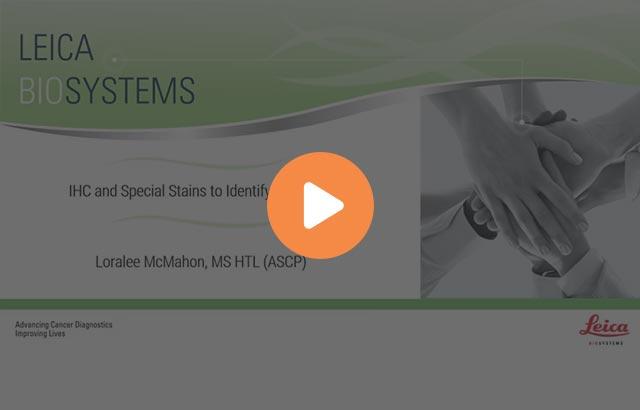
Acid Fast Bacteria and Acid Fast Staining


Pathologists use various stains to help make their diagnoses. One of the categories of stains is called special stains and refers to a technique where dyes or chemicals are used to identify specific cell structures or components present within the submitted sample. The pathologist can use these particular special stains to confirm or categorize the potential diagnoses.
Several special stains can be used to screen for the presence of bacteria. Other special stains can help categorize these bacteria into groups of bacteria. One of the more common special stains used to classify bacteria is Acid Fast staining. This stain is used to sort bacteria into acid-fast or non-acid-fast groups.1
The Acid Fast stain determines if the blood, tissue, or other body fluid is infected with Mycobacteria, which can cause diseases such as leprosy or tuberculosis (TB) or Nocardia (bacteria found in soil and water that may affect the lungs, brain, and skin).2 According to the World Health Organization, tuberculosis alone is the leading cause of death from an infectious agent, and worldwide, an estimated 9.9 million people became ill with TB in 2020. Tuberculosis is curable.3 Diagnosis and treatment are critical in the treatment of these diseases.
The acid-fast bacteria (AFB) cell consists of a gram-positive cell envelope with high lipid content and includes the bacterias - Mycobacteria (M. leprae, M. tuberculosis, M. smegmatis, M. Avium complex, M. kansasii) and Nocardia ( N. brasiliensis, N. cyriacigeorgica, N. farcinica, and N. nova.)4, 5 These cell walls are waxy like and difficult to penetrate; therefore the laboratory must use special stains to identify the organisms.
In 1882, the discovery of the tubercle bacillus by Robert Koch with a complex staining method prompted other researchers to attempt to improve on Koch’s process. This finding by Koch led to the development of various approaches to staining acid-fast bacteria – four are listed below.
Ziehl-Neelson Staining
Named for two German physicians, one of the earliest and standard staining techniques is Ziehl-Neelson (ZN) staining. The staining is performed by placing cells in suspension on a slide, air-drying the liquid then fixing the cells with heat. The primary reagent used is Carbol Fuchsin, followed by a decolorizer and acid alcohol, then counterstained with methylene blue/malachite green. If the cell is acid-fast, it will remain red from the Carbol Fuchsin. The non-acid fast cell will pick up the methylene blue.6 Slides viewed using the ZN method are with a standard bright-field microscope.
Kinyoun Staining
Developed by Joseph Kinyoun, the Kinyoun stain is similar to the Ziehl-Neelson stain without heating. This staining is referred to as the cold method. The primary reagent used is Kinyoun Carbol Fuchsin Stain (a mixture of basic fuchsin, phenol, ethanol, and deionized water), followed by Carbol Fuchsin Decolorizer (a combination of hydrochloric acid with ethanol), then counterstained with methylene blue/malachite green. With the Kinyoun staining method, high concentrations of Carbol Fuschin are used instead of heat.7 Again, the acid-fast cells will remain red, while the non-acid fast cells will retain the blue from the methylene blue used. These slides can also be viewed under a standard microscope.
Auramine-Rhodamine Fluorochrome or Truant Method
Auramine-Rhodamine Fluorochrome uses fluorescence microscopy to visualize acid-fast bacilli. The primary reagent used is a fluorescent dye, Auramine-Rhodamine, followed by the decolorizer, acid-alcohol, then counterstained using potassium permanganate. Acid-fast bacilli will fluoresce red-orange, yellow, or reddish-yellow. Non-acid-bacilli do not fluoresce and appear pale yellow.8
Fite Staining
The Fite stain is used to diagnose leprosy and other bacterial infections such as Nocardiosis. This staining method was worked on by others and was also known as the Fite-Faraco method and the Wade-Fite method. Using peanut oil mixed with xylene in the deparaffinization, the oil coats the cell walls and protects the acid fastness. Mineral oil is sometimes substituted in this staining protocol.9 The primary reagent in this protocol is Carbol-fuchsin, followed by a rinse in water, acid alcohol, and counterstained with Methylene blue. The acid-fast bacilli will be red and the background blue.10
발표자 소개

Rhondalyn Bomkamp, is an accomplished Director/Nurse Leader with a proven track record of effectively managing complex projects and health system performance improvement initiatives. As a registered nurse, she has experience in Quality and Patient Safety and Project Management/Development in the oncology, cardiac and intensive care arenas. She has strong clinical knowledge and management experience with the ability to recognize opportunities for improvement, coordinate the work of many areas and develop collaborative relationships with diverse groups to facilitate the implementation of change.

David Newell has been working in the field of Laboratory Medicine for over 20 years. He has experience working on the Laboratory Informatics Implementation team, leading installations across North America. Before joining Leica Biosystems, he served in several roles at a large reference laboratory in Arizona, including over eight years as a Histotechnologist. He has experience managing an Anatomic Pathology Department for a level 1 trauma center and a dermatology laboratory. David holds a Bachelor of Science in Kinesiology and Master of Business Administration and Histologic Technician (HT) certification through the American Society for Clinical Pathology (ASCP). He received his Six Sigma and Lean training through Quest Diagnostics in 2002 and 2010, respectively.
참조 문헌
- Carson, FL (1997). Microorganisms. In Histotechnology: A Self-Instructional Text (2nd ed., p. 180). essay, ASCP Press.
- Nocardiosis | CDC. www.cdc.gov. Published December 10, 2018. https://www.cdc.gov/nocardiosis/index.html#:~:text=Nocardiosis%20is%20a%20disease%20caused
- Global Tuberculosis Report 2021. www.who.int. https://www.who.int/teams/global-tuberculosis-programme/tb-reports/global-tuberculosis-report-2021
- Acid-Fast - an overview | ScienceDirect Topics. Sciencedirect.com. Published 2017. https://www.sciencedirect.com/topics/medicine-and-dentistry/acid-fast
- Bayot ML, Sandeep Sharma. Acid Fast Bacteria. Nih.gov. Published December 28, 2018. https://www.ncbi.nlm.nih.gov/books/NBK537121/
- Wikipedia Contributors. Ziehl–Neelsen stain. Wikipedia. Published September 2, 2019. https://en.wikipedia.org/wiki/Ziehl%E2%80%93Neelsen_stain
- https://www.facebook.com/onlinemicrobiologynote. Kinyoun stain (Acid Fast Cold) Method: Principle, Procedure, Result. Microbiology Note. Published March 30, 2021. https://microbiologynote.com/kinyoun-stain-acid-fast-cold-method/
- Mokobi F. Auramine- Rhodamine Staining. Microbe Notes. Published September 10, 2020. Accessed April 19, 2022. https://microbenotes.com/auramine-rhodamine-staining/#what-is-auramine-rhodamine-staining
- Fixation on Histology Blog. www.nsh.org. Accessed July 28, 2022. https://www.nsh.org/blogs/natalie-paskoski/2020/08/11/peanut-oil-in-the-fite-stain
- SURGICAL PATHOLOGY HISTOLOGY Date: STAINING MANUAL -MICROORGANISMS Page: 1 of 2. https://webpath.med.utah.edu/HISTHTML/MANUALS/FITES.PDF
Related Content
라이카 바이오시스템즈 Knowledge Pathway 콘텐츠는 에서 이용할 수 있는 라이카 바이오시스템즈 웹사이트 이용 약관의 적용을 받습니다. 법적고지. 라이카 바이오시스템즈 웨비나, 교육 프레젠테이션 및 관련 자료는 특별 주제 관련 일반 정보를 제공하지만 의료, 규정 또는 법률 상담으로 제공되지 않으며 해석되어서는 안 됩니다. 관점과 의견은 발표자/저자의 개인 관점과 의견이며 라이카 바이오시스템즈, 그 직원 또는 대행사의 관점이나 의견을 나타내거나 반영하지 않습니다. 제3자 자원 또는 콘텐츠에 대한 액세스를 제공하는 콘텐츠에 포함된 모든 링크는 오직 편의를 위해 제공됩니다.
모든 제품 사용에 다양한 제품 및 장치의 제품 정보 가이드, 부속 문서 및 작동 설명서를 참조해야 합니다.
Copyright © 2025 Leica Biosystems division of Leica Microsystems, Inc. and its Leica Biosystems affiliates. All rights reserved. LEICA and the Leica Logo are registered trademarks of Leica Microsystems IR GmbH.



